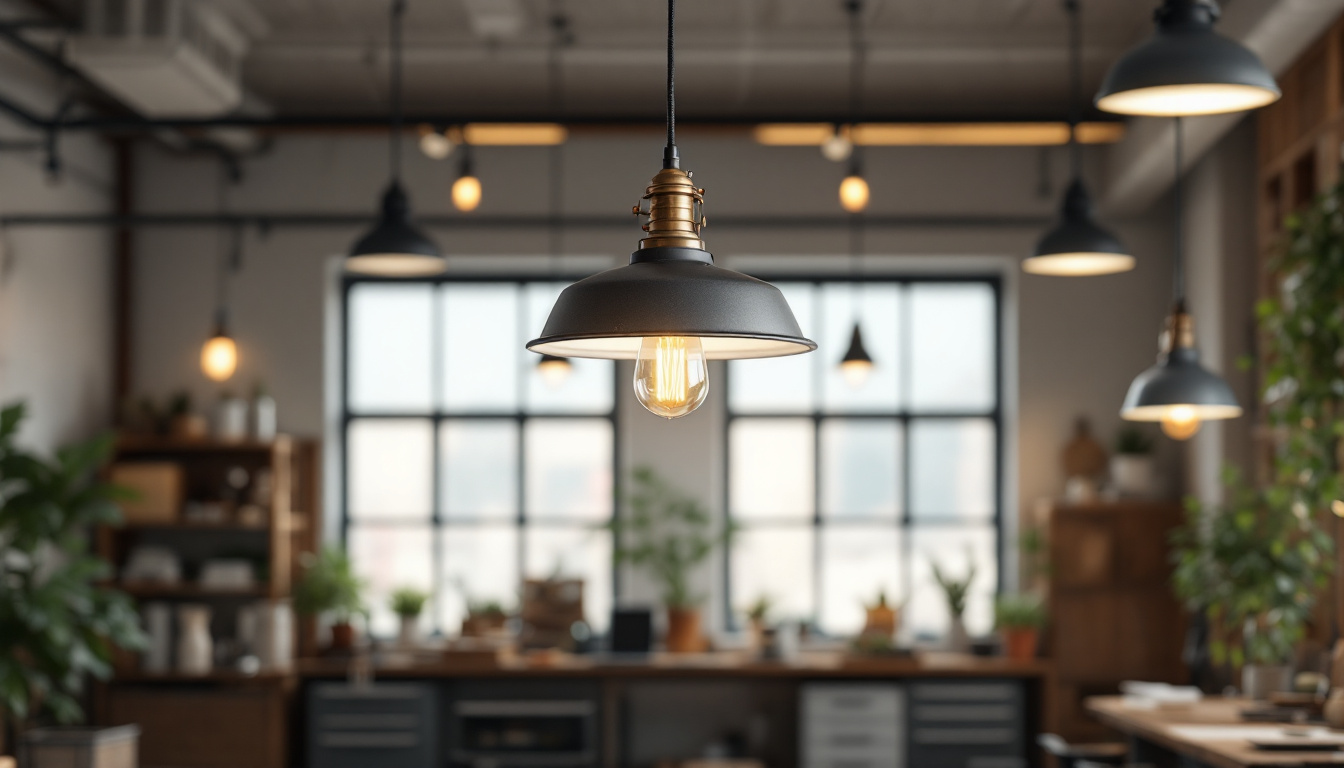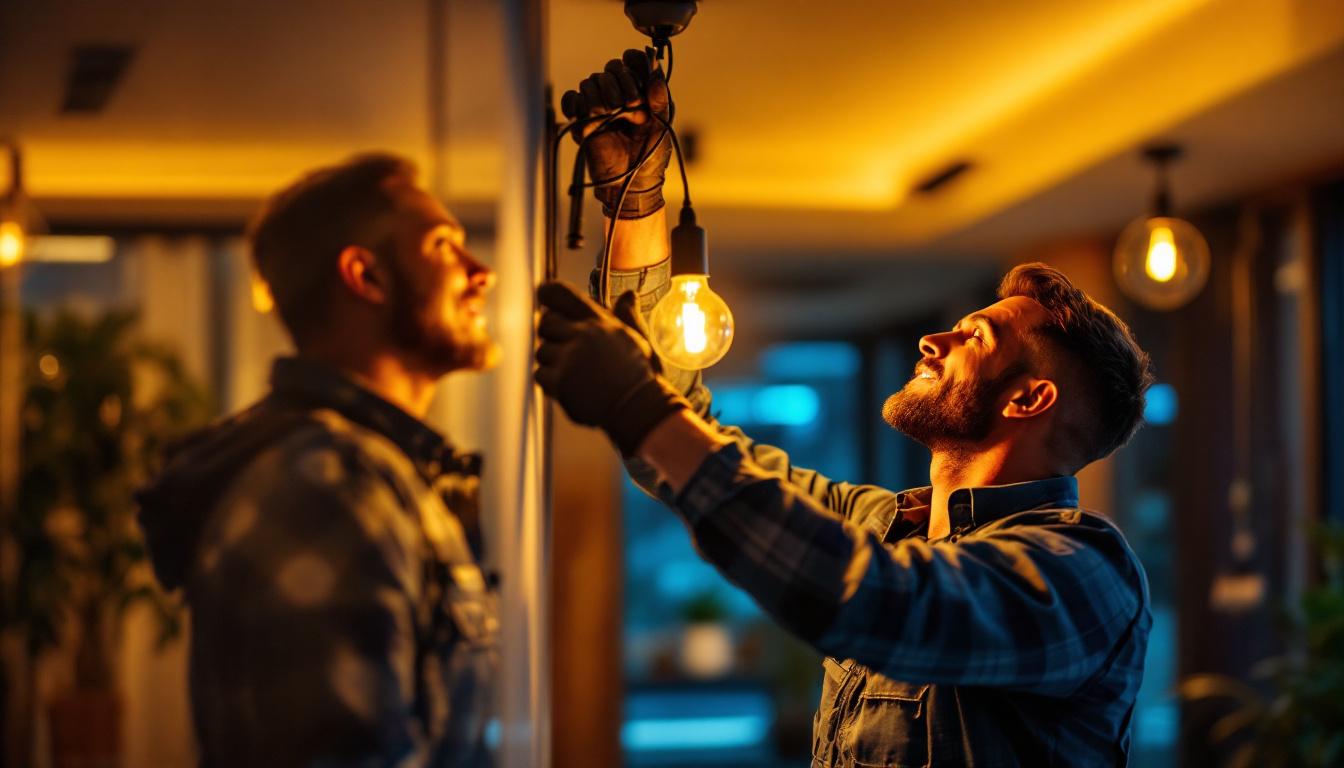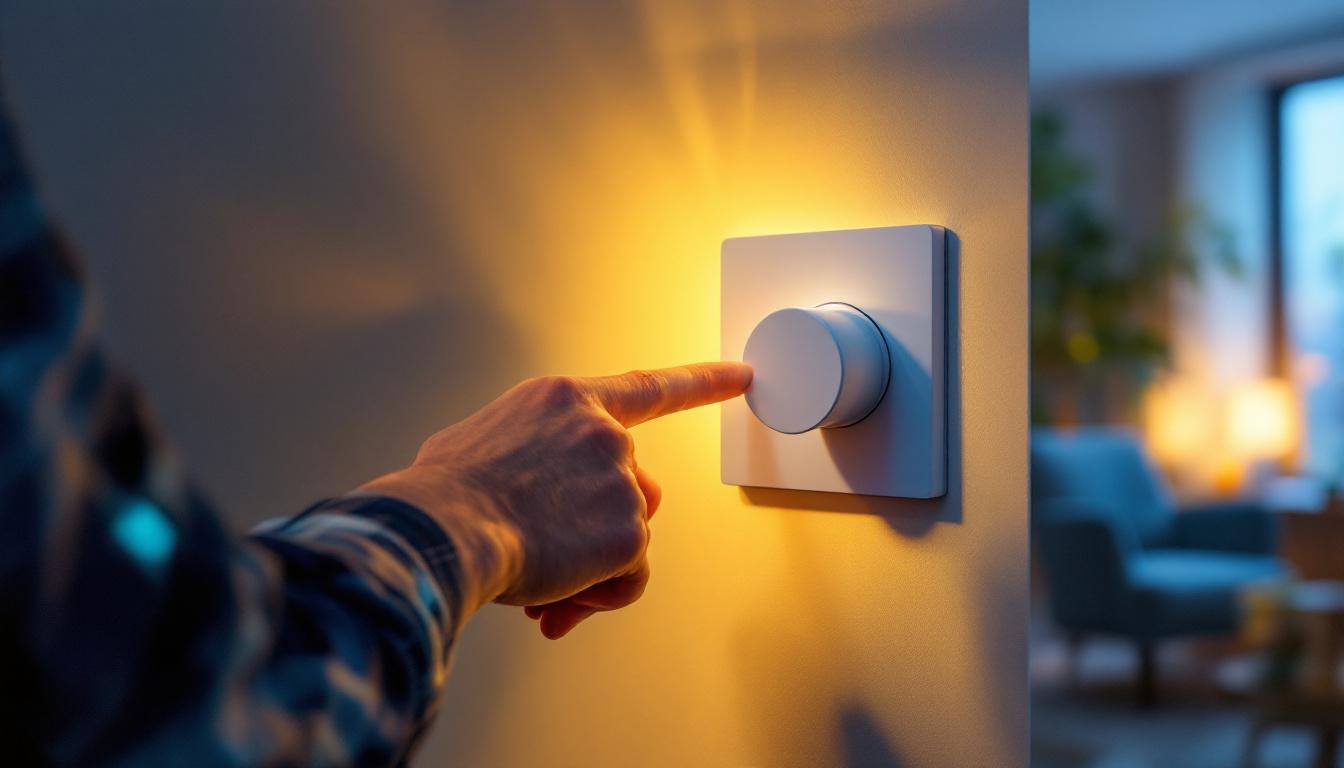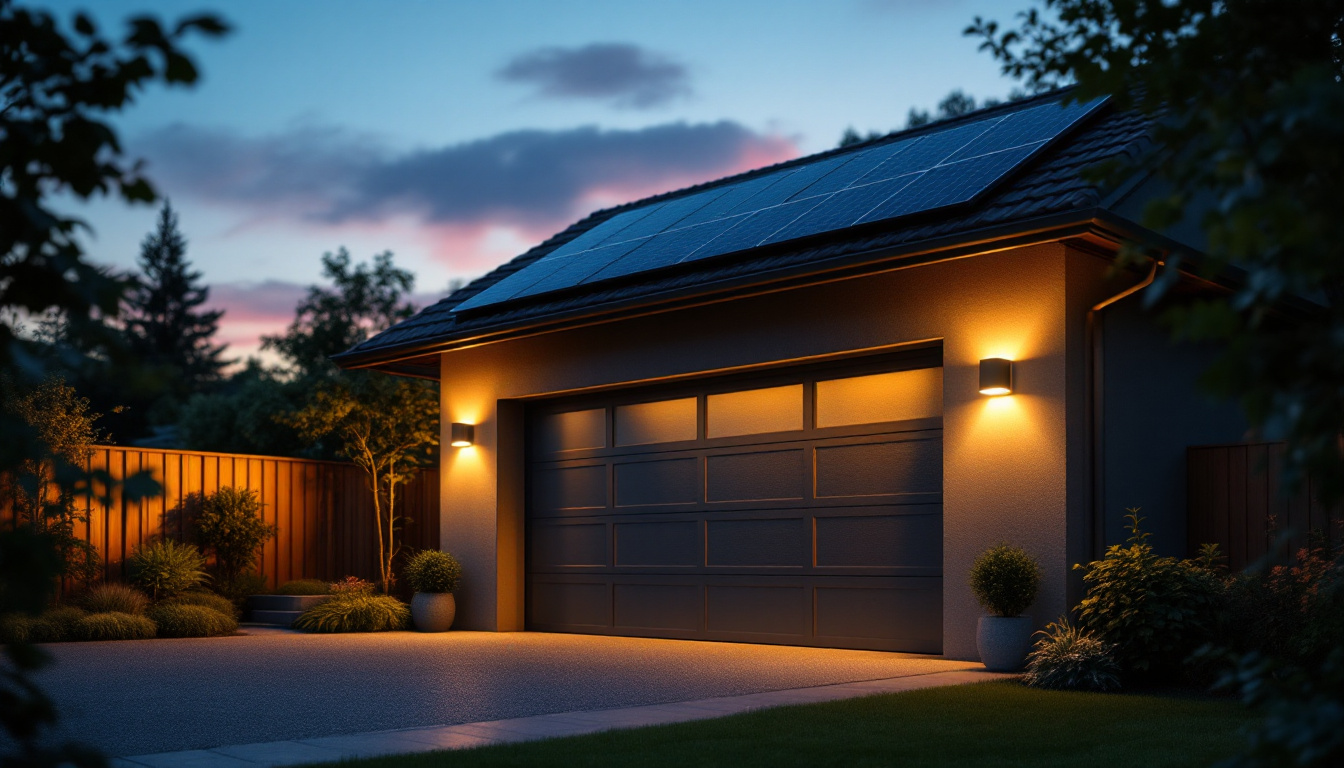
In the realm of industrial lighting, ceiling lamps play a pivotal role in ensuring both functionality and aesthetics. Lighting contractors must navigate a myriad of considerations when selecting and installing these fixtures. This article delves into best practices that can enhance the effectiveness and efficiency of ceiling industrial lamps, providing valuable insights for lighting contractors.
Ceiling industrial lamps are not merely sources of light; they are integral components of a workspace’s design and functionality. These fixtures illuminate large areas, ensuring safety and productivity in environments such as warehouses, factories, and commercial spaces. The right lighting can significantly impact the mood and efficiency of workers, making it essential for contractors to choose wisely. Beyond mere illumination, the aesthetic appeal and design of these lamps can also influence the overall atmosphere of a workspace, creating an environment that fosters creativity and collaboration among employees.
One of the primary functions of ceiling industrial lamps is to enhance safety. Proper lighting reduces the risk of accidents by illuminating hazards and ensuring that workers can see clearly as they navigate their tasks. In environments where machinery and heavy equipment are in use, the importance of adequate lighting cannot be overstated. For example, poorly lit areas can lead to missteps or mishaps that could result in injuries, making it essential for employers to invest in high-quality lighting solutions that meet safety standards.
Moreover, visibility is crucial for maintaining productivity. A well-lit workspace allows employees to focus on their tasks without straining their eyes or becoming distracted. Contractors should consider the specific needs of the space and the tasks performed when selecting lighting solutions. Additionally, the placement of these lamps can be strategically planned to minimize shadows and dark spots, further enhancing the overall visibility. This attention to detail not only boosts efficiency but also contributes to a more comfortable working environment, which can lead to increased job satisfaction and reduced turnover rates among employees.
In today’s environmentally conscious world, energy efficiency is a key consideration for lighting contractors. Ceiling industrial lamps should be chosen not only for their brightness but also for their energy consumption. LED fixtures, for instance, offer significant energy savings compared to traditional incandescent or fluorescent lamps. These modern lighting solutions not only consume less power but also have a longer lifespan, reducing the frequency of replacements and maintenance costs.
Implementing energy-efficient lighting solutions can lead to substantial cost savings over time. Additionally, many organizations are now prioritizing sustainability, making energy-efficient lighting an attractive option for contractors looking to meet client expectations. Furthermore, utilizing smart lighting technology, such as motion sensors and dimmers, can optimize energy use by ensuring that lights are only on when needed. This not only contributes to lower energy bills but also aligns with corporate social responsibility goals, showcasing a commitment to sustainable practices that resonate with clients and the community alike.
The selection process for ceiling industrial lamps involves various factors, including the type of space, the tasks being performed, and the desired aesthetic. Understanding these elements can help contractors make informed decisions that align with the needs of their clients. Proper lighting not only enhances productivity but also contributes to the safety and comfort of the work environment, making it a crucial aspect of industrial design.
There are several types of ceiling industrial lamps available, each suited for different applications. High bay lights, for example, are ideal for warehouses and large retail spaces with high ceilings, providing powerful illumination over expansive areas. On the other hand, low bay lights are designed for spaces with lower ceilings, such as workshops and storage areas. These fixtures ensure that every corner of the room is well-lit, reducing the risk of accidents and improving visibility for workers.
Additionally, pendant lights can be used for both functional and decorative purposes in industrial settings. These fixtures not only provide focused lighting but can also enhance the overall design of the space. For instance, in a trendy café or a modern office, stylish pendant lights can add character while delivering the necessary illumination for tasks. Contractors should assess the specific requirements of the environment to determine the most appropriate type of lamp, taking into account factors such as ceiling height, the layout of the space, and the nature of the work being performed.
Another critical factor in selecting ceiling industrial lamps is color temperature. Measured in Kelvin (K), color temperature affects the ambiance of a space. Warmer color temperatures (around 3000K) create a cozy atmosphere, while cooler temperatures (5000K and above) promote alertness and focus. This aspect is particularly important in environments where precision and attention to detail are paramount, such as manufacturing facilities or laboratories.
In industrial settings, cooler color temperatures are often preferred, as they mimic daylight and help workers stay attentive. However, it is essential to consider the nature of the work being done and the preferences of the employees when making this decision. For instance, a creative studio might benefit from a warmer light that fosters a relaxed atmosphere, while a technical assembly line may require brighter, cooler lights to enhance concentration. Additionally, the use of dimmable fixtures can offer flexibility, allowing for adjustments based on the time of day or specific tasks being performed, ultimately creating a more adaptable workspace.
Once the appropriate ceiling industrial lamps have been selected, the installation process becomes paramount. Proper installation not only ensures the functionality of the lighting but also enhances safety and longevity.
Before installation, contractors should develop a comprehensive lighting layout plan. This plan should take into account the size of the space, the height of the ceilings, and the specific tasks being performed. A well-thought-out layout maximizes light distribution and minimizes shadows, ensuring that every corner of the workspace is adequately illuminated.
Additionally, contractors should consider the placement of fixtures in relation to workstations and machinery. Proper positioning can enhance visibility and safety, allowing workers to perform their tasks more efficiently.
Lighting contractors must also ensure that their installations comply with local building codes and regulations. This includes adhering to standards for electrical safety and energy efficiency. Familiarity with these regulations is crucial to avoid potential legal issues and to ensure the safety of the installation.
Moreover, contractors should stay updated on any changes in regulations that may affect their work. Regular training and education can help contractors maintain compliance and provide the best service to their clients.
Even the best-installed ceiling industrial lamps require regular maintenance to ensure optimal performance. Establishing a maintenance schedule can help extend the lifespan of the fixtures and maintain their efficiency.
Conducting regular inspections of ceiling industrial lamps is essential for identifying any potential issues before they escalate. Contractors should check for signs of wear and tear, such as flickering lights or damaged fixtures. Early detection can prevent costly repairs and ensure that the lighting remains effective.
Additionally, keeping the fixtures clean is crucial. Dust and grime can accumulate on lamps, reducing their brightness and efficiency. Regular cleaning not only maintains the aesthetic appeal of the lighting but also ensures that it operates at peak performance.
As technology continues to evolve, lighting contractors should consider upgrading fixtures to incorporate the latest advancements. Smart lighting solutions, for example, offer enhanced control over lighting levels and energy consumption. These systems can be programmed to adjust based on occupancy or time of day, further improving energy efficiency.
Investing in modern technology can provide significant benefits for both contractors and clients. Upgraded systems often come with warranties and support, ensuring that any issues can be addressed promptly.
Effective communication with clients is a cornerstone of successful lighting contracting. Educating clients about the importance of ceiling industrial lamps and the best practices for their use can foster trust and satisfaction.
Contractors should take the time to discuss various lighting options with their clients. Understanding the client’s needs, preferences, and budget can lead to a more tailored solution that meets their expectations. This dialogue not only helps in selecting the right fixtures but also builds a rapport that can lead to future projects.
Additionally, contractors should be prepared to explain the benefits of different types of lamps, including energy efficiency, longevity, and maintenance requirements. Providing clear information empowers clients to make informed decisions.
After installation, offering post-installation support can further enhance client satisfaction. This support may include providing guidance on maintenance practices, troubleshooting common issues, and answering any questions that arise after the project is completed.
By being available for ongoing support, contractors can solidify their reputation as reliable professionals. This not only encourages repeat business but also leads to referrals, as satisfied clients are likely to recommend the contractor to others.
Ceiling industrial lamps are a vital component of any industrial lighting strategy. For lighting contractors, understanding the best practices in selection, installation, maintenance, and client communication is essential for delivering high-quality results. By prioritizing safety, energy efficiency, and client satisfaction, contractors can ensure that their projects not only meet but exceed expectations.
As the industry continues to evolve, staying informed about the latest technologies and trends will enable contractors to remain competitive. Embracing these best practices will not only enhance the quality of installations but also contribute to a safer and more productive work environment for all.
Ready to elevate your industrial lighting projects with the best in class solutions? At LumenWholesale, we provide lighting contractors with the highest quality, spec-grade ceiling industrial lamps and more, all at unbeatable wholesale prices. Our commitment to cutting out the middleman means you get the superior products your clients demand, without the inflated markups. With our extensive selection that meets rigorous industry standards, you can ensure safety, energy efficiency, and satisfaction on every job. Plus, with the convenience of free shipping on bulk orders, LumenWholesale is your go-to source for premium lighting without the hassle. Don’t compromise on quality or value—choose LumenWholesale for Wholesale Lighting at the Best Value and make your next installation a shining success.

Discover essential tips and strategies for lighting contractors to prevent common pitfalls in connector lighting projects.

Discover how a dimmer works and its impact on lighting contractors’ projects. Learn key benefits, expert tips, and boost your lighting design skills today!.

Discover how solar lights can transform your garage exterior into an energy-efficient, eco-friendly space.

Discover the essential compliance guidelines for fluorescent LED lighting that every contractor should know.